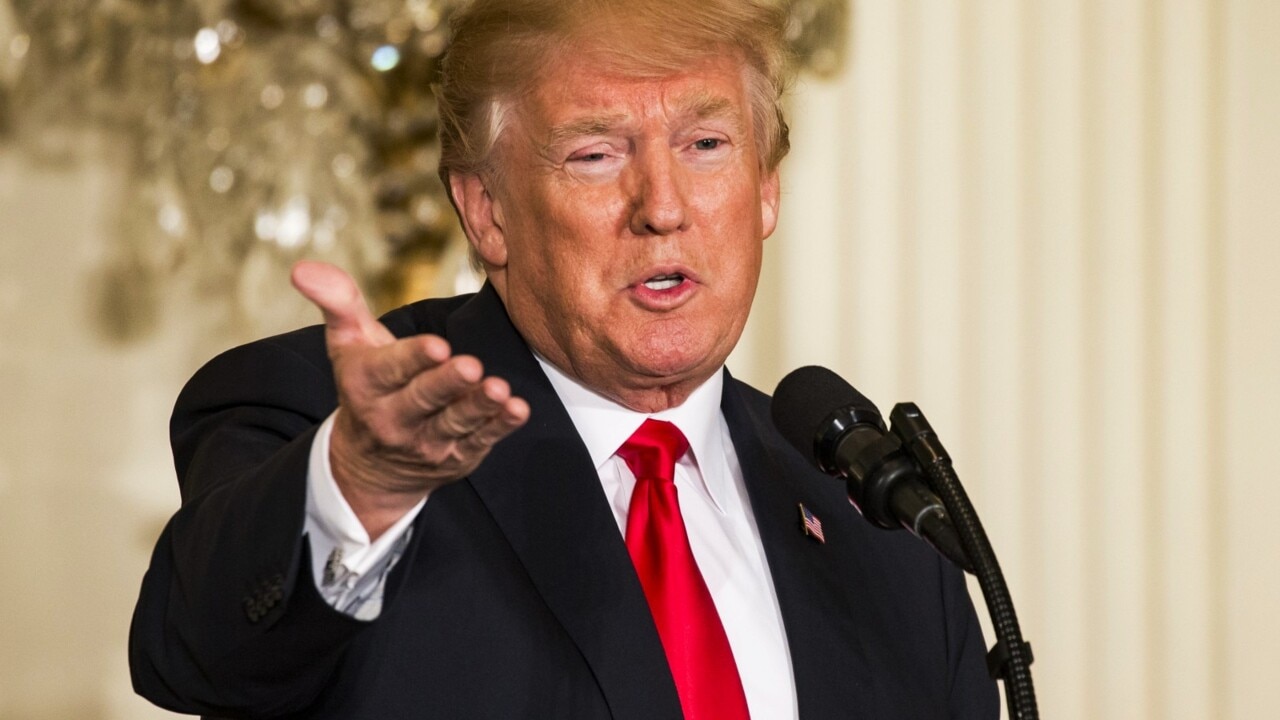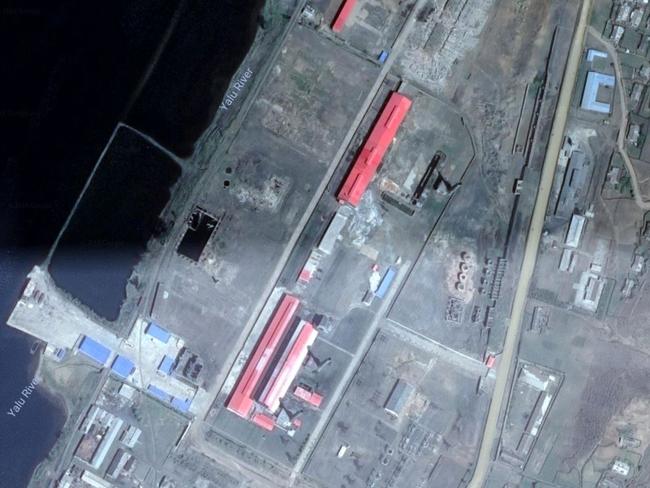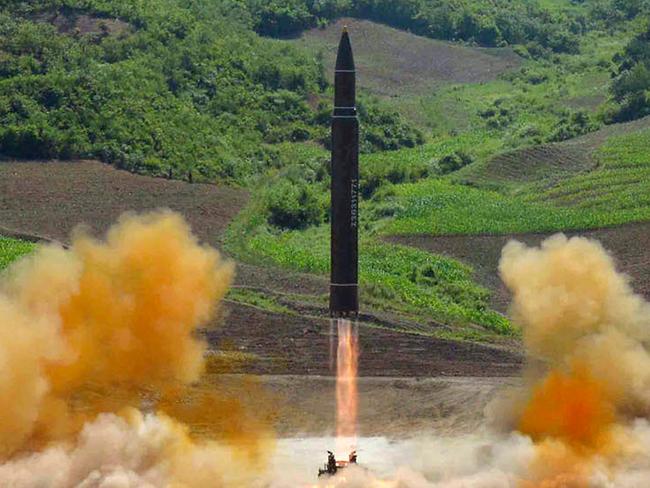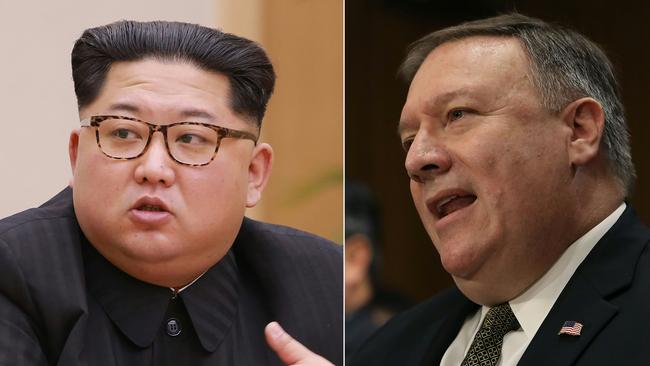Suspicious factory undermines North Korea’s nuclear promises
KIM Jong-un has promised to wind down his weapons program, but satellite imagery casts doubt over North Korea’s intentions.

EXPERTS have raised fresh doubts over North Korea’s intentions to wind down its nuclear weapons program after new images reveal suspicious activity at a factory complex.
The images published by the Institute for Science and International Security, reveal expanded activity at a complex in Chongsu, near the Chinese border.
Researchers at the Washington-based non-profit group suspect the complex contains a nuclear-grade graphite production facility.
The material is vital for the production of nuclear reactors and missile components.
According to the report, the suspected graphite facility could not only help covertly advance North Korea’s weapons program but could also create a vital source of revenue for the regimen.
The institute’s founder and a former UN weapons inspector David Albright wrote how concerns over the facility came to light after a North Korea brochure advertising nuclear-grade graphite for sale was discovered.
Mr Albright analysed a series of satellite images taken over several years which showed significant changes in the former coal-burning power plant which has since been dismantled and modernised.

His report goes on to highlight how these buildings have been “surrounded by a new security perimeter wall with a security checkpoint building” at the front entrance.
The report stresses there is no concrete proof the facility is being used for graphite production, but highlights how North Korea has been concentrating on increasing graphite production in recent times.
“Prior to 2014, as part of building this plant, North Korea’s atomic establishment conducted additional graphite research and procured in China both equipment and technology for the plant,” Mr Albright writes.
“As part of this project, North Korean scientists went to China for training in making graphite.”
North Korea on Saturday said it would close its nuclear testing facility and suspend nuclear and intercontinental ballistic missile tests.
However the country stopped short of suggesting it had any intention of giving up its nuclear weapons or scaling back its production of missiles and their related component parts.
Kim has overseen dozens of missile tests, including intercontinental ballistic missiles (ICBMs) capable of reaching the US mainland.
The young leader, believed to be in his mid-30s, has overseen four of the country’s six nuclear tests and Pyongyang hails its weapons as a “treasured sword” protecting the country from potential US invasion.
US President Donald Trump tweeted that the secretive North had agreed to denuclearise as CIA Director Mike Pompeo travelled to North Korea over Easter weekend to lay the groundwork for the meeting between the two leaders.

‘SMOKE AND MIRRORS’
Professor of International Security and Intelligence Studies and director of ANU’s Southeast Asia Institute, John Blaxland, said the United States should treat Kim’s promise with scepticism.
“I am quite convinced the Kim Jong-un announcement was all smoke and mirrors,” he said.
“The (Punggye-ri) facility reportedly closed down is one that is effectively beyond repair, thanks to the multiple nuclear explosion tests conducted there. So it is an announcement about something that was effectively inoperable anyway.”
Prof Blaxland also raised doubts over Kim’s declaration that there would be no further testing in the lead up to the Kim/Trump summit as nothing of substance.
“Of course there was not going to be any more testing before the summit,” he said.
“To do otherwise would have been to sabotage Kim’s own initiative.”
Prof Blaxland said Kim wanted to generate sufficient momentum for the economic sanctions to be lifted.
“If he can persuade the South Koreans that they are better off without US forces stationed on their home turf then all the better, as far as KJU is concerned,” he said.
Prof Blaxland also said the west should be sceptical about what Kim means when he talks full denuclearisation.

“Let’s not forget he has clear in his mind the fate of Libya’s Gaddafi once he eschewed WMD, and Iraq’s Saddam Hussein, who bluffed about his WMD capability but lacked a nuclear arsenal to act as a deterrent,” he said.
The “paranoid” North Koreans also have a long track record of saying one thing and doing something else.
“We should be very wary of accepting any such declarations from Kim as being about appearance rather than substance,” he said.
SIGN OF PEACE?
Meanwhile South Korea halted anti-Pyongyang propaganda broadcasts across the rivals’ tense border ahead of inter-Korean talks later this week which are expected to focus on the North’s nuclear program.
Seoul has blasted anti-Pyongyang messages and K-pop songs from border loudspeakers since the North’s fourth nuclear test in early 2016.
Pyongyang quickly matched Seoul’s campaign with its own border broadcasts and launches of balloons carrying anti-South leaflets across the border.

However South Korea turned off its broadcasts to try to ease military tensions and establish an environment for peaceful talks, Seoul’s Defence Ministry said in a statement.
It said Seoul hopes its action would lead to both sides stopping mutual slander and propaganda activities.
The move came amid a recent thaw of animosities, with Kim trying to reach out to Seoul and Washington in recent months.
Kim and South Korean President Moon Jae-in are to meet at a border village on Friday in the rivals’ third-ever summit talks.
The North Korean leader is set to hold separate summit talks with Mr Trump in May or early June.
Kim has also said he was willing to place his nuclear program up for negotiations, however it remains unclear how serious disarmament steps he would offer during the two sets of the summit talks.
— with AP/AFP




